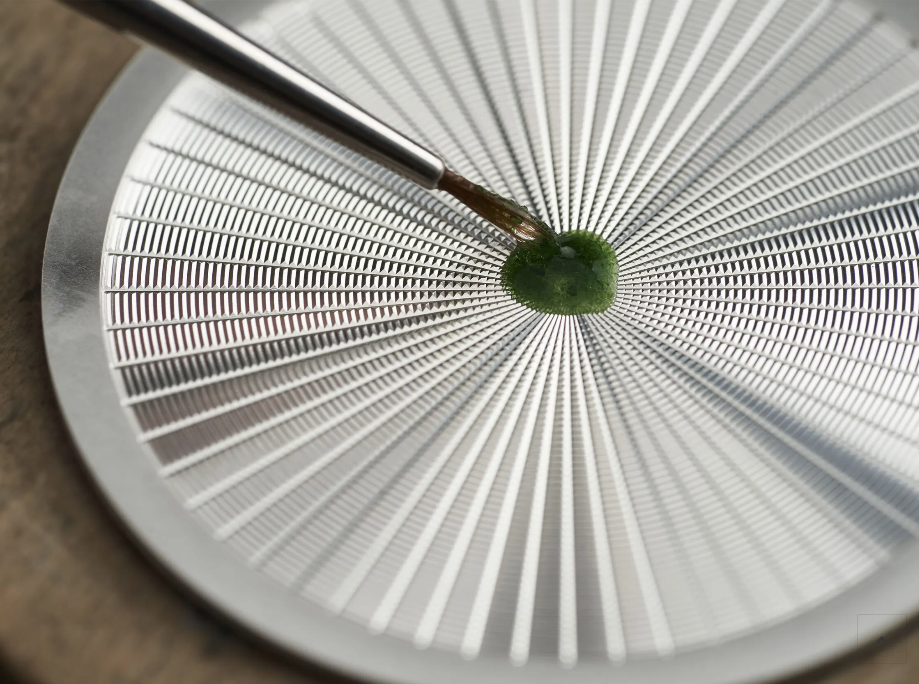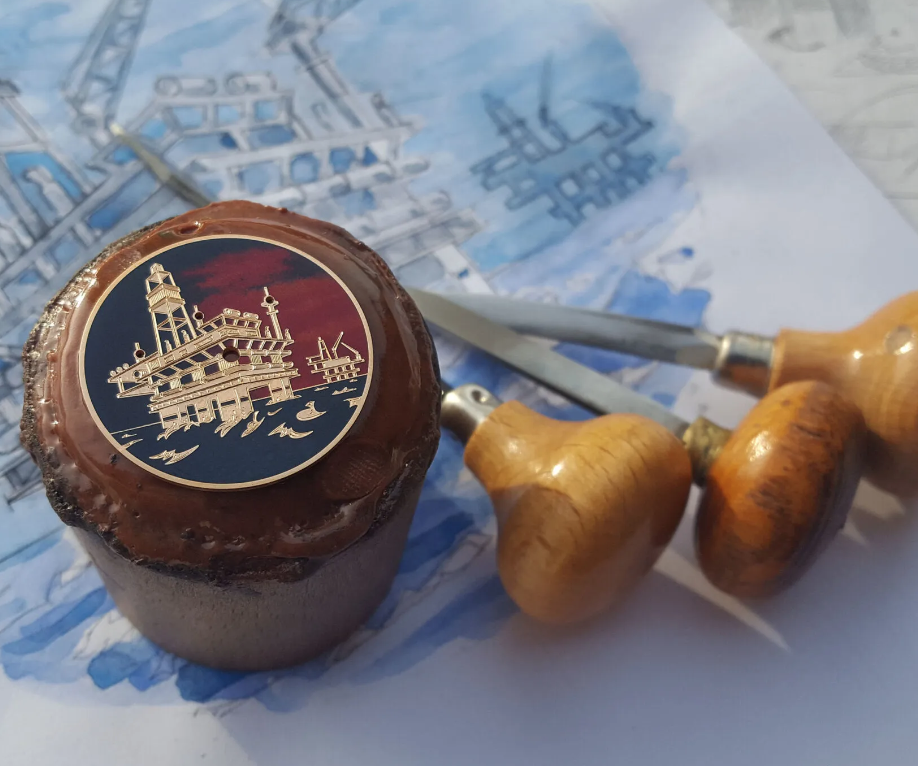

Founded in 1972 by Francis Donzé, this Le Locle-based workshop specializes in enamel dials. In the 1980s, the founder's daughter, Francine, and her husband, Michel Vermot, joined the company and further developed its traditional techniques. Today, Donzé Cadrans' watchmakers primarily commission their work from a diverse range of brands, including CZAPEK, FABIAN PELLET, Girard Perregaux, Lang & Heyne, Louis Erard, Ulysse Nardin, Birchall & Taylor, and LEBOIS & Co. Donzé Cadrans is a Swiss workshop that specializes in multiple advanced techniques, including the high-temperature enameling technique known as "Grand Feu," as well as Flinqué, Cloisonné, Champlevé, and Guilloché.

GRAND FEU ENAMEL
Since its introduction in the 17th century, "Grand Feu" enamel has dazzled the world of watchmaking with its timeless brilliance and exceptional durability. This traditional technique captures the essence of watchmaking artisanship and is a symbol of excellence and refinement. Combining carefully selected minerals and metal oxides to create an infinite range of colors, "Grand Feu" enamel is subjected to extremely high temperatures during the vitrification process. This delicate process, carried out in furnaces heated to well over 800°C, bestows each watch with a smooth, lustrous finish that will stand the test of time. In addition to its strength and beauty, "Grand Feu" enamel also serves as the ideal canvas for intricate decorations and sophisticated patterns. Using techniques such as champlevé, cloisonné, guilloché, and flinqué, Donzé Cadrans' enamellers create miniature works of art of unparalleled beauty and precision. Today, Donzé Cadrans' Grand Feu enamel continues to uphold a centuries-old tradition and embody the very essence of fine watchmaking: its enamelled dials are the result of meticulous work and know-how passed down from generation to generation, and powerful testament to the history and expertise of its artisans.

Guilloche and flannel enamel
The history of enamel dials is a tale of tradition shaped by centuries of artisanal skill. At the heart of this story lies the harmonious union of two techniques: guilloching and enameling. Guilloching, which began in the 17th century, requires meticulous skill to create intricate patterns using a guilloching machine. This technique is typically used on precious metals such as gold and silver. At the same time, a complementary technique called flinquing emerged, in which the guilloched pattern is reproduced on the dial with a stamping tool on a larger scale and with greater pressure. This artisanal tradition is carefully preserved and passed down with unparalleled dedication. The translucent or opalescent enamel is applied with precision, giving the dial a unique depth and transparency. After the enameling process, each piece is enhanced by meticulous finishing, highlighting its beauty and refinement. Thus, enamel dials are more than mere watch components; they embody the very essence of artisanal skill and timeless elegance.

Champlevé enamel
Champlevé enamel embodies a masterful fusion of two ancient crafts. It all begins with a master engraver carving intricate depressions and patterns into a gold plate. These depressions become the canvas for the enamellist, who meticulously deposits various enamels to create the relief pattern. After depositing and polishing the enamel, the engraver goes to work again, chipping away at the gold barriers to create depth and volume. It's a trompe-l'oeil technique that requires perfect chisel technique and exceptionally smooth movements. Each dial requires between eight and 15 hours of meticulous work to achieve perfection. At the heart of this tradition, Donzé Cadrans works closely with the Gravure Pierre-Alain Rozeron workshop, further enhancing the excellence and delicacy of each piece.
This collaboration between engraver and enameler evokes the rich and refined tradition of champlevé enamel, which flourished in Limoges in the 12th century. This intricate technique, in which hollow cavities are carved into precious metal plates and then inlaid with enamel, has left a profound mark on the history of European decorative arts. From precious reliquaries to majestic crucifixes and delicate candlesticks, champlevé enamel has adorned a wide variety of creations, proving its timeless beauty and durability. Today, champlevé enamel continues to inspire contemporary artisans and fascinate art lovers, demonstrating its enduring importance in the world's artistic heritage.

CLOISONNÉ ENAMEL
Cloisonné, an ancient goldsmithing technique, dates back to the Middle Ages and was widely practiced in ancient civilizations, including the Byzantine Empire in the early 4th century, as well as in the East. This technique requires a high level of precision. Gold or silver wire is used to create compartments (cells) into which colored enamel is meticulously sealed. The nuance and quality of the finished piece depend greatly on the fineness and carefully selected shape of the wire. Donze Cadran, for example, uses extremely thin rectangular wire to faithfully reproduce the most detailed designs.

CLOISONNÉ ENAMELING
The cloisonné production process requires meticulous attention to detail and craftsmanship. No compromises are allowed, from the placement of the dividers to the firing of the enamel and final polishing. The choice of wire, the stability of the dividers and the exact thickness of the enamel are crucial to achieving a result that meets the demands of this refined art.
The constant pursuit of three-dimensionality increases its complexity, requiring great skill and immense patience: a cloisonné dial takes between 50 and 60 hours to complete from start to finish.
The cloisonné production process requires meticulous attention to detail and a high level of skill. From the cloisonné firing to the enamel firing and final polishing, no compromises are allowed. The choice of wire, the stability of the partitions and the exact thickness of the enamel are crucial to achieving a result that meets the demands of this refined art. The constant quest for 3D printing increases the complexity, requiring high skill and endless patience.

FOLDING OF THE PARTITIONS
Despite its long history, cloisonné continues to fascinate, as it is both a historical heritage and a contemporary relevance. Artisans like Donze Cadrans ensure its permanence by respecting this tradition while adapting it to modern sensibilities. The fruit of know-how passed down from generation to generation, these works of art reflect a rich history and unparalleled artistic mastery. Whether perpetuating traditional motifs or exploring new creative paths, cloisonné continues to testify to human ingenuity and the timeless beauty of craftsmanship.
Depending on the motif, the cloisonné takes between 8 and 15 hours to complete.

Final process
Enamel is said to have originated in ancient Egypt and Greece. In Japan, it is known as Shippo, but the production process varies around the world.
Donze Cadrans is located in Switzerland, the home of watches.
I have explained about Dontse Cadran's work.
Many enamel dials that have been completed to this point break during the final firing process. At Comptoine Watch and Jewelry Boutique, you can see Donze Cadrans' works, which are no exaggeration to call art. Please come and see these works of art that have been completed to the very end with your own eyes.
CONTÉVANOU
Comptoine, an authorized watch and jewelry dealer
151-0053 Tokyo, Shibuya-ku, Yoyogi 4-28-7 Nishisando Terrace E1